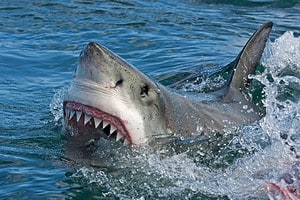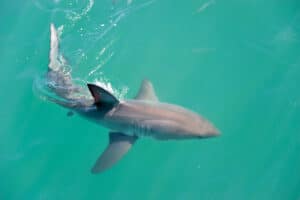Continue reading for our analysis...
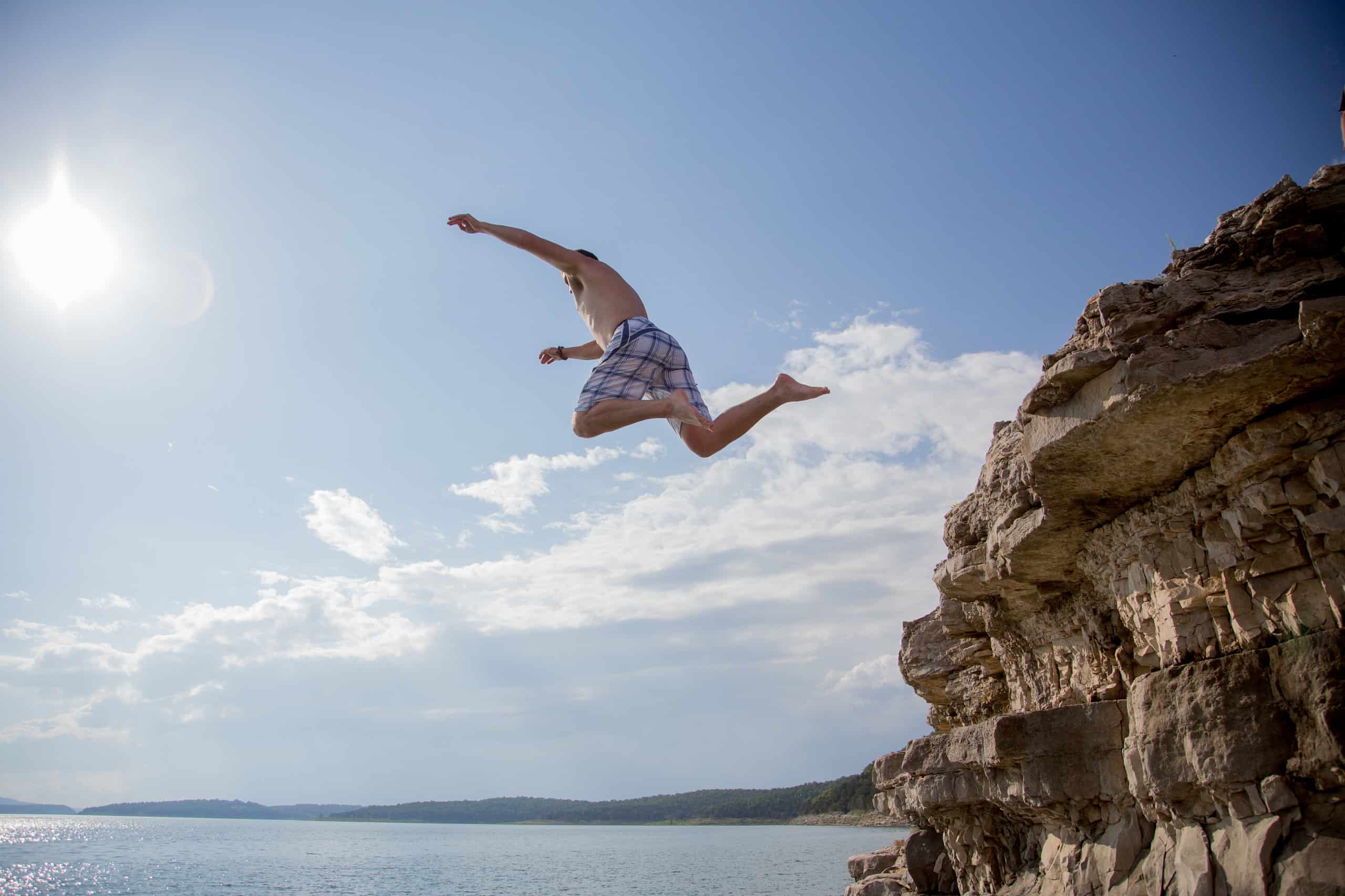
There’s something to be said about thrill seekers. They’re something special and often accomplish great feats.
In some instances, however, they just get themselves into unthinkable trouble! Watch the video at the bottom of this page to see a cliff diver’s thrilling freefall turn into a face-to-face encounter with a great white shark.
What is Cliff Diving?
Cliff diving is considered an extreme sport that both professionals and amateurs engage in. Essentially, divers seek out a cliff that leads to the water. They jump and free fall until they land in the water. Amateurs may just jump feet first, whereas other, more seasoned pros may perform some awe-inspiring aerobatics on their way down.
Cliff divers don’t utilize any special equipment like shoes, a helmet, or the like. They simply hurl bodies off the cliff and go! There are actually cliff diving competitive events such as the 2009 Cliff Diving Competition, where some pros jumped from a towering height of 85 feet (imagine an 8-story building to get a proper picture in your head). One prominent competition is the Red Bull Cliff Diving World Series, which has been going strong since 2009. Some of the locations this annual event has taken place in include Australia, Colombia, Chile, Cuba, Denmark, France, Germany, Norway, Thailand, and the United States.
Sometimes the cliffs aren’t that high, and other times, just the thought can make you queasy. This sport is not just extreme; it’s also dangerous due to a variety of factors and a lack of safety equipment.
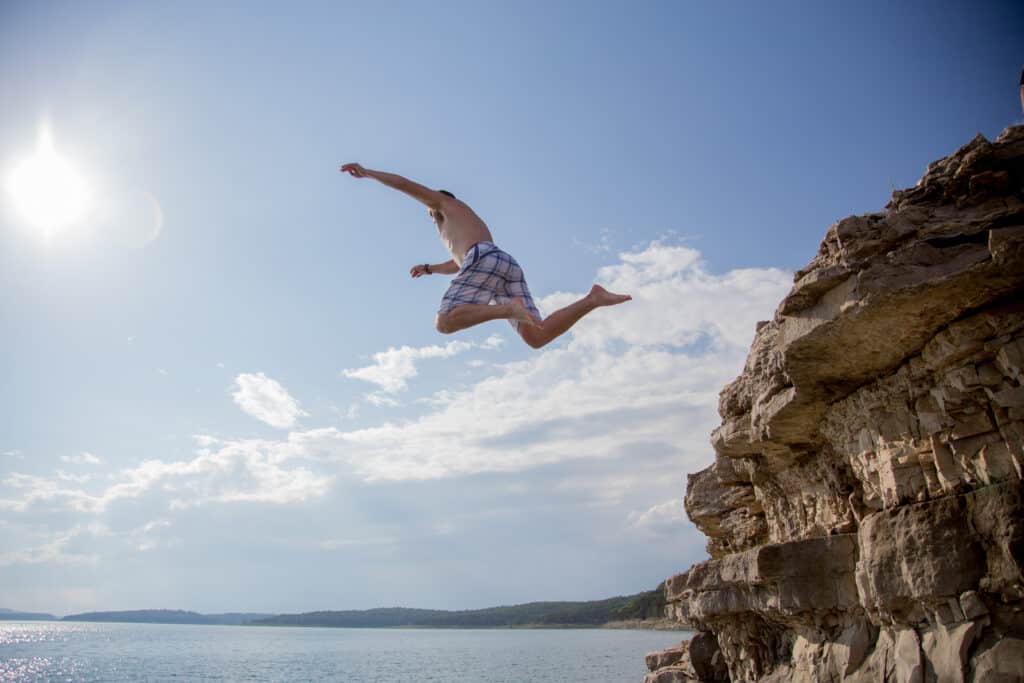
Amateurs cliff divers may just jump feet first into the water, vs. more seasoned pros who may perform aerobatics on their way down.
©Benjamin King/Shutterstock.com
Are Great White Sharks Aggressive to Humans?
Great white sharks are apex predators and are feared by both underwater creatures and humans. These huge sharks eat other fish and sharks. They also go for dolphins and seals and will even munch on a whale carcass.
They have shown aggression toward humans, with several recorded instances, including some fatal attacks. Interestingly, however, great white sharks don’t actively hunt people or enjoy the taste of human flesh. We’re not their cup of tea, so to speak. But if they are curious and think we’re one of the sea-dwelling creatures they usually prey on, they may get close enough to do serious damage.
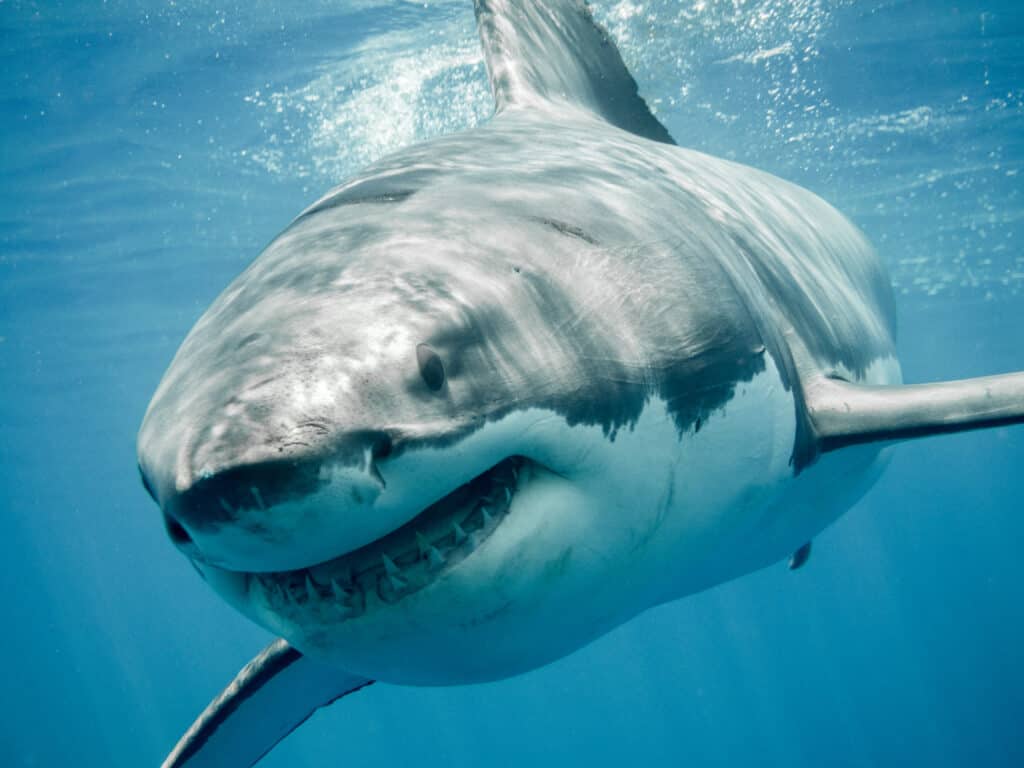
The great white shark gets a little too close for comfort.
©Ramon Carretero/Shutterstock.com
How Fast Are Great White Sharks Compared to People?
Great White sharks are formidable swimmers, regularly reaching speeds of 25 mph, making them the second fastest sharks globally. However, in short bursts, they can achieve even faster speeds of around 35 mph. This agility is crucial for their hunting behavior, as they rely on their swift movements to generate significant force during prey collisions, latching onto their targets with their tooth-filled mouths wide open for a decisive bite. Their exceptional speed also grants them a notable advantage, as few prey species can outswim these apex predators.
In contrast, human swimming speeds are considerably slower. Olympic swimmers can reach speeds of approximately 5 mph over short distances. However, the average person’s swimming speed is around 2 mph, which translates to roughly a minute to swim a 50-meter lap. In the aquatic realm, humans are no match for the extraordinary velocity and prowess exhibited by Great White sharks.
From Cliff to Shark: One Diver’s Ultimate Adrenaline Rush
The video below starts as a man fixes his GoPro camera, looking down into a lens at an awkward angle. He straps it on, high-fives his buddy, and heads around a fence to a cliffside. He’s at Sydney Harbour in Australia, and several boats can be seen in the distance.
He makes his way to the edge of the cliff and says, “Alright, ready!” and jumps. He grunts a bit as if choking back some fear as he freefalls. The camera captures his plunge into the water, and the view gets blurry and bubble-filled.
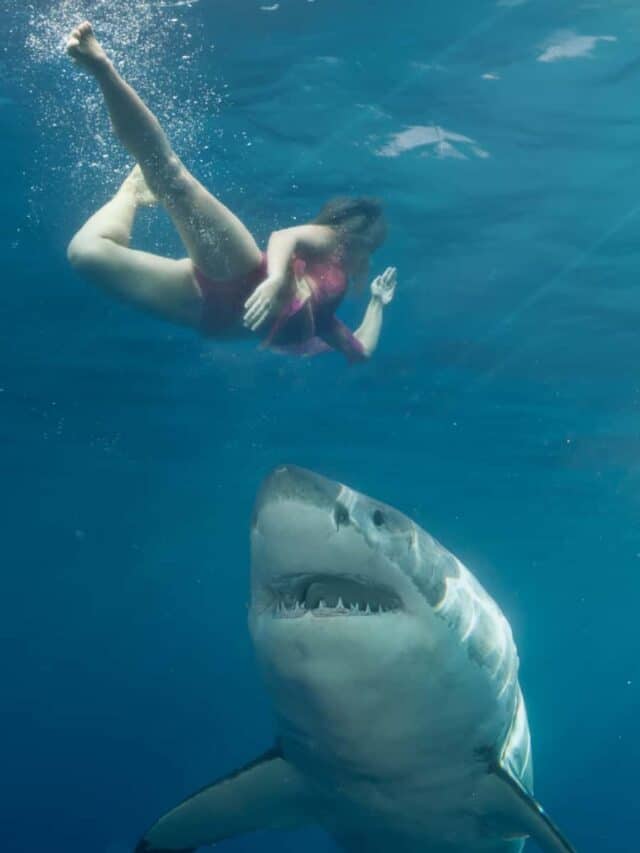
Swimmers should always be aware of their surroundings if swimming in waters where sharks could be swimming.
©Willyam Bradberry/Shutterstock.com
He comes up within seconds only to hear his buddy screaming “Shark!” from the cliff and pointing toward the water. Perhaps not registering what his buddy is saying at first, he gives a thumbs up. A second later, he realizes the precarious situation he’s in. He starts swimming and heads straight for it.
When he spots it, he’s underwater and lets out a horrified, muffled scream. The shark swims mere feet from him, and he flails his legs and arms, trying to get it to move. Watch his reaction when he finally reaches safety in the video below!
Size of Great White Sharks at Different Life Stages
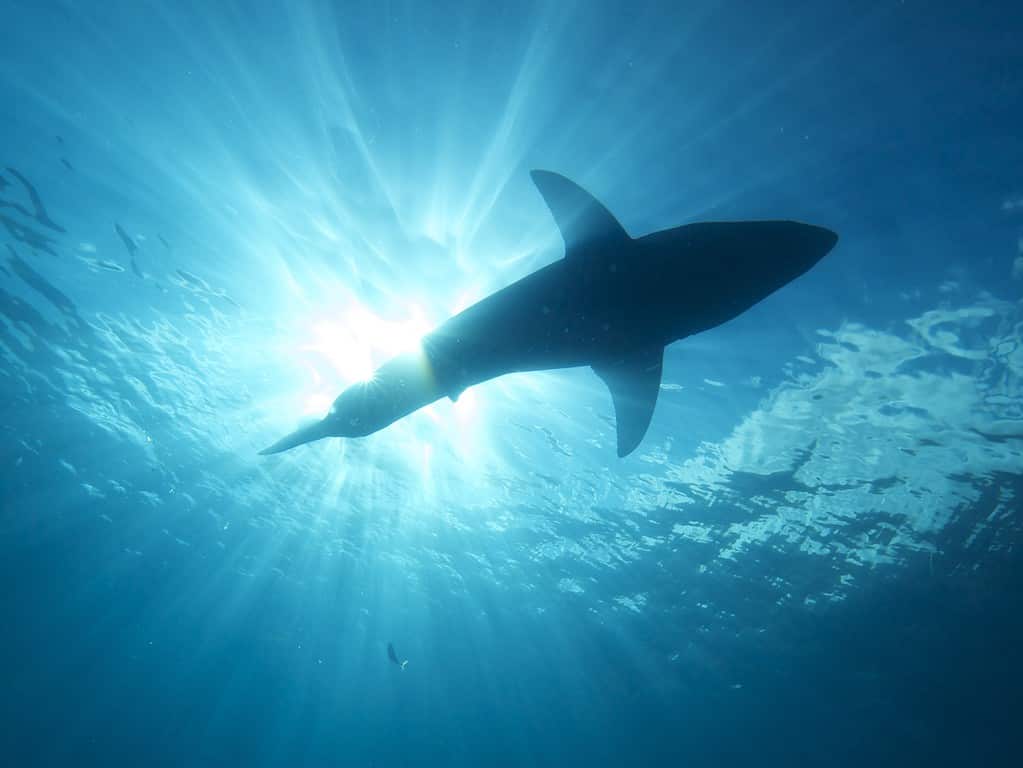
Great white sharks are nearly 5,000 when fully grown.
©Elias Levy / CC BY 2.0 – License
The great white shark is one of the most fearsome predators in the ocean, but when they’re first born, they’re quite small. Newborn great whites are typically around 30-35 inches (76-89 cm) long. They grow quickly, however, and can reach lengths of around 15 feet (4.5 m) in just a few years.
Females tend to be larger than males, especially when fully grown. On average, adult female great whites can reach lengths of up to 20 feet (6 m), while adult male great whites are usually closer to 11-13 feet (3.3-4 m).
Despite their size, great white sharks are incredibly agile and can swim up to 25 miles per hour (40 kph). They can also dive to depths of around 4,900 feet (1.5 km).
The great white shark is an impressive and awe-inspiring creature, and understanding its size at various stages of life helps us appreciate its strength and power.
Thank you for reading! Have some feedback for us? Contact the AZ Animals editorial team.



